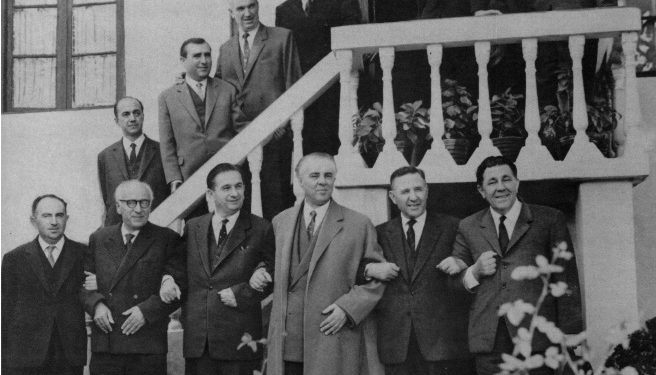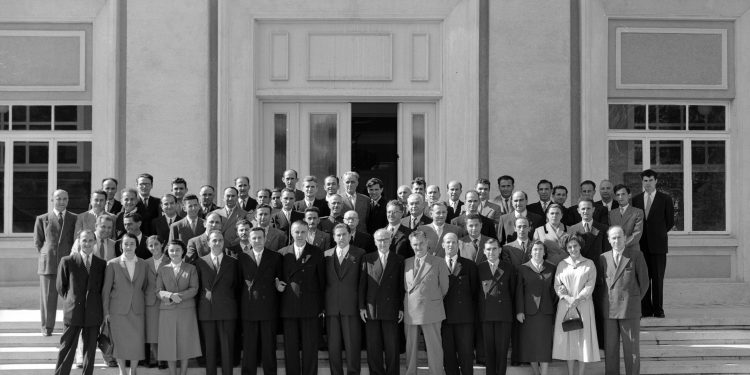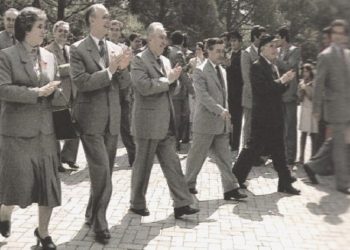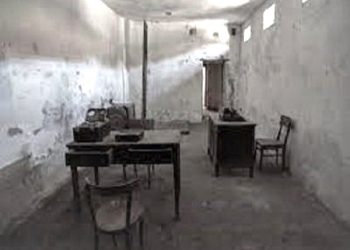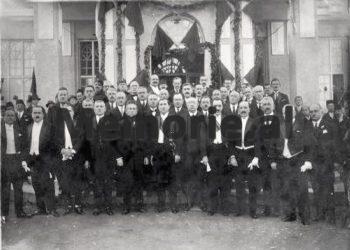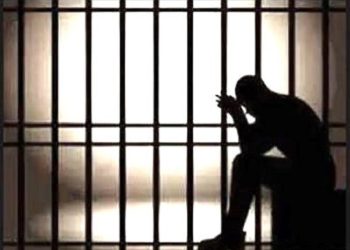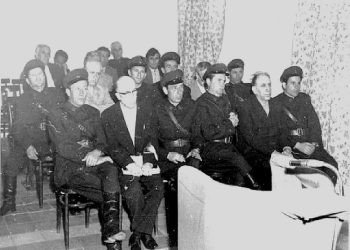Dashnor Kaloçi
Memorie.al publishes a list of 100 names of prominent personalities, as founders of the Communist Party of Albania since 1941, leaders of the Anti-Fascist National Liberation War as commanders and commissars, and later senior staff and functionaries of the Communist regime. Enver Hoxha, who over the years was accused of being “enemies of the people and criminals” and sentenced to death, died in investigative cells and prisons, or suffered years of political persecution in the prisons and internment camps of that regime. …
During its 50 years of existence, the Albanian Communist Party, then called the Party of Labor of Albania, tragically eliminated from its ranks almost all of the highest and most vocal exponents they had founded, or which had significantly contributed to the consolidation of its power. All these characters who were physically assaulted or eliminated by the Communist regime of Enver Hoxha had devotedly served until the very last moment, this very party, and its leader, Enver Hoxha, who with a pencil drop deciding which ones to keep living, and which ones not! The contribution of these great personalities of Albanian Communism begins with the founding of the Communist Party on November 8, 1941, and then with the Anti-Fascist National Liberation War, to end with the period, usually in historiography of that time. time would also be labeled as the “socialist construction of the country” in 1944-1991. Ironically, the 100 characters on this list can even be described as the leaders of the Albanian Communist regime (at least a good part of them), who were well-educated in the most popular schools and academies. of the East or of the West in the 1930s and 40s of the last century and until 1961 in the countries of the Communist East, or as it was then called by official propaganda, as “People’s Democracies”. Some of these characters had helped Enver Hoxha in the struggles for the coming to power of the Party he led in war-torn Albania in 1943-1944, while others had helped him cement the roots of his absolute power in the hierarchy. of the Labor Party of Albania. While the third and final part would be the most tragic one, which zealously accompanied dictator Hoxha in the wake of his fierce 45-year rule in the country. And right at the end, this piece, without waiting, fell prey to its own monstrous crimes! Charges for them would be set in the dark corridors of the shady-heavy building that once had not only Tirana but the entire site of the Central Committee of the Albanian Labor Party, with their implementation being in charge of the Ministry of Internal Affairs. of its branches and numerous departments, the most prominent of which was the State Security, which Enver himself had regarded as the “sharp tip of the sword of the dictatorship of the proletariat”?! The paranoid nature of the Albanian Communist regime would label these unfortunates as “enemies of the people”, “traitors to the homeland”, “agents of the Yugoslav UDB, the Soviet KGB, the American CIA” of all sorts. other epithets of various kinds. But their only “fault” that they would only realize when they saw themselves in the dark cells of Investigators or Security, political camps and prisons or remote villages in internment, was that they had supported and served until At that moment Enver Hoxha’s power ?! Many remained loyal to the point that when they were sentenced to death and executed, they took the courage and courage to apologize to him, even writing letters from prison or internment where would declare him eternal faithfulness! Likewise another part of them, with the firing squad on their heads, would shout his name until the last few seconds, having some sort of “hope” that their ruler could forgive them! Unfortunately, that would not be the case. Because the model of the campaign of purges and eliminations that Enver Hoxha would carry out on his comrades, associates and colleagues was identical in copy to the Communist Party of the Soviet Union and personally to its leader, Joseph Visarionovich Stalin. This method was imported into official Tirana thousands of miles away from Moscow, where within its Kremlin walls its leaders “ate” each other and those who remained on top of it “ate” the next cut. The story of Albania’s Labor Party is tragically similar to its Soviet counterpart, a story of suffering and purges, a story of eliments and mysterious killings of its founders and mainstream members. Frighteningly, this method of rule after 1945 spread to all the communist states of the East, where of course even small Albania would absorb and adapt it to its model. And that would be because the very person who would export this model to the communist world, Joseph Visarionovich Stalin, would at the same time serve as a guide and an idol for the Albanian communist dictator, Enver Hoxha, with a list of purges of his close associates. , it’s hundreds. At this writing, Memorie.al brings the first 25 characters of this list of 100 names.
List of names and corresponding functions of 100 characters and personalities of Enver Hoxha’s close associates, eliminated by him in 1943-1985.
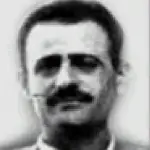 Anastas Lula, chairman of the Communist Youth Group, participating in the founding meeting of the SNP and Enver’s potential rival for the SNP leader. In 1942 he was discharged from party duties and sent as a mere partisan to the Berat area, where, by order of Enver Hoxha, he was shot in 1943 by a partisan unit of the Riza Cerova Battalion in Qafe Gllava in Tepelena, and was buried there.
Anastas Lula, chairman of the Communist Youth Group, participating in the founding meeting of the SNP and Enver’s potential rival for the SNP leader. In 1942 he was discharged from party duties and sent as a mere partisan to the Berat area, where, by order of Enver Hoxha, he was shot in 1943 by a partisan unit of the Riza Cerova Battalion in Qafe Gllava in Tepelena, and was buried there.
-
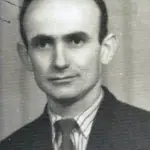 Sadik Premte, co-founder of the Communist Youth Group, participating in the founding meeting of the SNP, organizer and leader of the Anti-Fascist Movement in Vlora province, where he is declared a “factionist” by Enver Hoxha and escapes firing by the circulator a communist from Vlora, where Enver himself had gone to expose him as a traitor, escaped from Albania. From 1944 he lived in Paris until his death in 1991 after escaping two assassinations from the State Security.
Sadik Premte, co-founder of the Communist Youth Group, participating in the founding meeting of the SNP, organizer and leader of the Anti-Fascist Movement in Vlora province, where he is declared a “factionist” by Enver Hoxha and escapes firing by the circulator a communist from Vlora, where Enver himself had gone to expose him as a traitor, escaped from Albania. From 1944 he lived in Paris until his death in 1991 after escaping two assassinations from the State Security.
-
 Mustafa Gjinishi, an anti-Zogite immigrant to Yugoslavia, joins British missions and returns to Albania to organize anti-fascist resistance, a member of the General Staff of the National Liberation Army with the rank of lieutenant colonel. Participants in the Conference of Peza, Mukjes, Labinot, and Përmet. Charged by the CPA for bringing Nationalists to the Front ranks. Accompanist and interpreter of the British Allied Missions at the UNSHA Headquarters. He was executed behind the back by Enver Hoxha’s order in August 1944 in Hinosk, Dibra in the presence of British Smith. The execution was carried out by a unit consisting of 5 partisan cadres (who after the war assumed important posts in the Ministry of Defense, the Central Committee, the Political Bureau, etc.) and thereafter the General Staff held a minute of mourning and issued a communiqué as if he had been killed by German patrols.
Mustafa Gjinishi, an anti-Zogite immigrant to Yugoslavia, joins British missions and returns to Albania to organize anti-fascist resistance, a member of the General Staff of the National Liberation Army with the rank of lieutenant colonel. Participants in the Conference of Peza, Mukjes, Labinot, and Përmet. Charged by the CPA for bringing Nationalists to the Front ranks. Accompanist and interpreter of the British Allied Missions at the UNSHA Headquarters. He was executed behind the back by Enver Hoxha’s order in August 1944 in Hinosk, Dibra in the presence of British Smith. The execution was carried out by a unit consisting of 5 partisan cadres (who after the war assumed important posts in the Ministry of Defense, the Central Committee, the Political Bureau, etc.) and thereafter the General Staff held a minute of mourning and issued a communiqué as if he had been killed by German patrols. 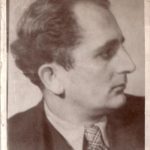 Lazar (Zai) Fundo, a prominent exponent of the communist movement in the years of the Zog Monarchy in the city of Korça, graduated in law in France where he knows Enver Hoxha closely, returns to Albania and participates in the Anti-Fascist Movement serving as an interpreter near an Anglo-American mission attached to the Kosovo Kryeziu brothers. In September 1944 following a written order from Enver Hoxha, he was arrested in the Tropoja area by partisans of the 5th Brigade and died after being barbarously tortured by them in Kolesjan, Kukes.
Lazar (Zai) Fundo, a prominent exponent of the communist movement in the years of the Zog Monarchy in the city of Korça, graduated in law in France where he knows Enver Hoxha closely, returns to Albania and participates in the Anti-Fascist Movement serving as an interpreter near an Anglo-American mission attached to the Kosovo Kryeziu brothers. In September 1944 following a written order from Enver Hoxha, he was arrested in the Tropoja area by partisans of the 5th Brigade and died after being barbarously tortured by them in Kolesjan, Kukes.
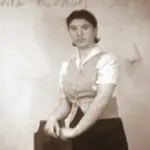 Drita Kosturi, a student of the “Nana Queen” Institute in Tirana, a Communist of the first hours, engaged to Qemal Stafa’s fiancé, was arrested in 1946 and after many years in prison where he was tortured inhumanely, living in exiled villages. Fier, until 1991. After the ’90s, it publicly shed light on the backgrounds in the murder of her fiancé, Qemal Stafa.
Drita Kosturi, a student of the “Nana Queen” Institute in Tirana, a Communist of the first hours, engaged to Qemal Stafa’s fiancé, was arrested in 1946 and after many years in prison where he was tortured inhumanely, living in exiled villages. Fier, until 1991. After the ’90s, it publicly shed light on the backgrounds in the murder of her fiancé, Qemal Stafa.
-
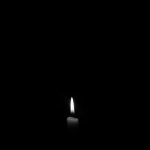 Agron Çorati, the main exponent of the Communist movement for the Tirana district, demonstratively removed from the SNP in 1944, denouncing Yugoslav-Albanian cooperation by a tract thrown into the capital, fled to pursue studies in the He came to Austria in 1944, but after a year he returned to Albania in the hope that something had changed in official Tirana policy. He is immediately arrested as anti-Yugoslav and sentenced to prison. After a short time he is released and interned in Zvernec, Vlora, where he performs some of the most mundane work. Died after a heart attack in 1977 as a result of hard work.
Agron Çorati, the main exponent of the Communist movement for the Tirana district, demonstratively removed from the SNP in 1944, denouncing Yugoslav-Albanian cooperation by a tract thrown into the capital, fled to pursue studies in the He came to Austria in 1944, but after a year he returned to Albania in the hope that something had changed in official Tirana policy. He is immediately arrested as anti-Yugoslav and sentenced to prison. After a short time he is released and interned in Zvernec, Vlora, where he performs some of the most mundane work. Died after a heart attack in 1977 as a result of hard work. 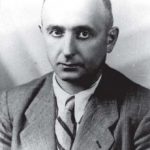 Sejfulla Maleshova, antizogist, secretary general of the Prime Minister’s office for six months governing Noli, antizogist immigrant, became a member of the Communist Party of the Soviet Union in 1931, and two years later was appointed a lecturer at the university where he studied. In 1934 he was accepted to COMINTERN and returned to Albania in 1943 and was elected a member of the NAJL Army Staff and a member of the Democratic Front General Council. In 1944-1946 member of KANÇ. In 1944 he served as minister for the Press, Propaganda and Popular Culture – the ministry that no longer worked. In 1945-1946 Vice President of the Democratic Front. At the Second Plenum of Berat in November 1944 he openly criticized the terrorist line that had gripped the Communist Party and the responsibilities Enver personally had at its head. In 1946-48 he was a member of the Presidium of the People’s Assembly. In 1946-’47 he was Minister of Education and chairman of the Albanian Writers and Artists League. Because of his liberal views of the time, he clashed with senior leadership and personally with Enver Hoxha, after which he was expelled from the party and dismissed from all party-state functions. He was repeatedly denigrated for his “opportunist” views and sent to work as a regular. From 1956 he settled in Fier, where he worked as a tobacco storekeeper, bookkeeper, and samaritan salesman. On June 11, 1971 Sejfulla Maleshova passed away and was buried in the old city cemetery. Doubts have been cast over his death since the 1990s, and his former close friend, Xhaferr Vokshi, has made public and a correspondence with him in those years.
Sejfulla Maleshova, antizogist, secretary general of the Prime Minister’s office for six months governing Noli, antizogist immigrant, became a member of the Communist Party of the Soviet Union in 1931, and two years later was appointed a lecturer at the university where he studied. In 1934 he was accepted to COMINTERN and returned to Albania in 1943 and was elected a member of the NAJL Army Staff and a member of the Democratic Front General Council. In 1944-1946 member of KANÇ. In 1944 he served as minister for the Press, Propaganda and Popular Culture – the ministry that no longer worked. In 1945-1946 Vice President of the Democratic Front. At the Second Plenum of Berat in November 1944 he openly criticized the terrorist line that had gripped the Communist Party and the responsibilities Enver personally had at its head. In 1946-48 he was a member of the Presidium of the People’s Assembly. In 1946-’47 he was Minister of Education and chairman of the Albanian Writers and Artists League. Because of his liberal views of the time, he clashed with senior leadership and personally with Enver Hoxha, after which he was expelled from the party and dismissed from all party-state functions. He was repeatedly denigrated for his “opportunist” views and sent to work as a regular. From 1956 he settled in Fier, where he worked as a tobacco storekeeper, bookkeeper, and samaritan salesman. On June 11, 1971 Sejfulla Maleshova passed away and was buried in the old city cemetery. Doubts have been cast over his death since the 1990s, and his former close friend, Xhaferr Vokshi, has made public and a correspondence with him in those years. Gjergj Kokoshi, Member of the People’s Assembly in the first post-war elections in December 1945, and a member of the Anti-Fascist National Liberation Council in 1944-1946. Minister of Education in the government of Enver Hoxha. He was arrested in 1946 and sentenced to 30 years in prison with the Parliamentary Group. Dies in Burrel prison cells after complicated urinary canal surgery.
Gjergj Kokoshi, Member of the People’s Assembly in the first post-war elections in December 1945, and a member of the Anti-Fascist National Liberation Council in 1944-1946. Minister of Education in the government of Enver Hoxha. He was arrested in 1946 and sentenced to 30 years in prison with the Parliamentary Group. Dies in Burrel prison cells after complicated urinary canal surgery.
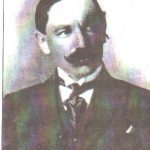 Riza Dani, intellectual of one of the most popular family in the city of Shkodra, an Antizogist exponent in the Monarchy period, engages in the Anti-Fascist Movement in the Shkodra district with leadership functions, after the War he is appointed Chairman of the Executive Committee of Shkodra, and Chairman of the Shkodra Executive Committee. Democratic Front for the District of Shkodra, MP in the People’s Assembly on December 2, 1946. Arrested in 1946, accused of being one of the leaders of the Opposition Group of Deputies, sentenced to death and executed after two years of rigorous investigation.
Riza Dani, intellectual of one of the most popular family in the city of Shkodra, an Antizogist exponent in the Monarchy period, engages in the Anti-Fascist Movement in the Shkodra district with leadership functions, after the War he is appointed Chairman of the Executive Committee of Shkodra, and Chairman of the Shkodra Executive Committee. Democratic Front for the District of Shkodra, MP in the People’s Assembly on December 2, 1946. Arrested in 1946, accused of being one of the leaders of the Opposition Group of Deputies, sentenced to death and executed after two years of rigorous investigation.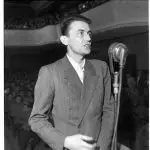 Shefqet Beja, a major merchant of the city of Durres, finances the anti-fascist partisan war in Peza. In 1944 he was elected Vice-Chairman of the Democratic Front of Albania and a Member of the People’s Assembly. In 1946 he is accused of being the leader of the Opposition Group of Deputies and after being sentenced to death, he is executed by rope hanging in the city of Tirana, and his dead body was left hanged for three days in the former wooded area.
Shefqet Beja, a major merchant of the city of Durres, finances the anti-fascist partisan war in Peza. In 1944 he was elected Vice-Chairman of the Democratic Front of Albania and a Member of the People’s Assembly. In 1946 he is accused of being the leader of the Opposition Group of Deputies and after being sentenced to death, he is executed by rope hanging in the city of Tirana, and his dead body was left hanged for three days in the former wooded area.
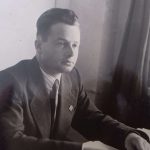 Selaudin Toto, one of Albania’s best-known intellectuals of the 40s, the younger brother of Ismet and Et’hem Toto who organized the Delvina Uprising against King Zog in 1938 and were sentenced to death by him. President of the Institute of Albanian Studies, (now the Academy of Sciences), and Member of the People’s Assembly, was arrested in 1946 on charges of being one of the leaders of the “Group of Deputies”, sentenced to death and executed in 1947.
Selaudin Toto, one of Albania’s best-known intellectuals of the 40s, the younger brother of Ismet and Et’hem Toto who organized the Delvina Uprising against King Zog in 1938 and were sentenced to death by him. President of the Institute of Albanian Studies, (now the Academy of Sciences), and Member of the People’s Assembly, was arrested in 1946 on charges of being one of the leaders of the “Group of Deputies”, sentenced to death and executed in 1947.
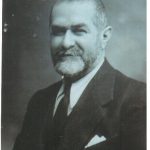 Sheh Karbunara, a prominent Muslim clergyman (Bektashi), a renowned fanolist, attending the Lushnja Congress and an anti-Zogist immigrant to Italy. It strongly supports the Anti-Fascist struggle in the Myzeqe area and in the first elections of 1945, represents that province in the People’s Assembly. In 1946, he was arrested with the opposition MP Group and shot with his son a year later.
Sheh Karbunara, a prominent Muslim clergyman (Bektashi), a renowned fanolist, attending the Lushnja Congress and an anti-Zogist immigrant to Italy. It strongly supports the Anti-Fascist struggle in the Myzeqe area and in the first elections of 1945, represents that province in the People’s Assembly. In 1946, he was arrested with the opposition MP Group and shot with his son a year later.
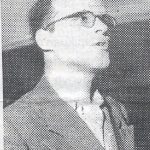 Enver Sazani, Graduated in medicine in France and returns to Albania, serving in the Kruja-Ishem partisan gang and the Peza gang. One of Enver Hoxha’s close acquaintances. After the liberation of the country, he was appointed director of the Tirana Military Hospital, but was arrested along with other opposition MPs on charges of “crimes against the state and related to foreign agents for the overthrow of public power”. The process known as the “Court of Deputies” took place on September 27, 1947 in the “17 November” cinema hall. Sentenced to death and executed in 1947.
Enver Sazani, Graduated in medicine in France and returns to Albania, serving in the Kruja-Ishem partisan gang and the Peza gang. One of Enver Hoxha’s close acquaintances. After the liberation of the country, he was appointed director of the Tirana Military Hospital, but was arrested along with other opposition MPs on charges of “crimes against the state and related to foreign agents for the overthrow of public power”. The process known as the “Court of Deputies” took place on September 27, 1947 in the “17 November” cinema hall. Sentenced to death and executed in 1947.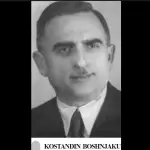 Kosta Bosnnjaku, Member of the KONARE Central Committee. He was a member of the delegation led by Nolin at the BS Friends Conference in 1927. He lived in Sofia in 1931-34 and in Romania in 1934-’39. He returned to Albania in 1939 and in September 1943 joined the Anti-Fascist War, in January 1945 he was appointed general director of the State Bank, and was elected deputy to the People’s Assembly in 1946 -4747. In 1946 he was fired, arrested in 1947 with the second group of deputies, and in January 1948 pleaded guilty to “being linked to Anglo-Americans”. In 1949 he was granted amnesty. He spoke out against the nationalization of industry and the abolition of private initiative. He died in 1953 as a result of the torture inflicted on the investigator and prison.
Kosta Bosnnjaku, Member of the KONARE Central Committee. He was a member of the delegation led by Nolin at the BS Friends Conference in 1927. He lived in Sofia in 1931-34 and in Romania in 1934-’39. He returned to Albania in 1939 and in September 1943 joined the Anti-Fascist War, in January 1945 he was appointed general director of the State Bank, and was elected deputy to the People’s Assembly in 1946 -4747. In 1946 he was fired, arrested in 1947 with the second group of deputies, and in January 1948 pleaded guilty to “being linked to Anglo-Americans”. In 1949 he was granted amnesty. He spoke out against the nationalization of industry and the abolition of private initiative. He died in 1953 as a result of the torture inflicted on the investigator and prison.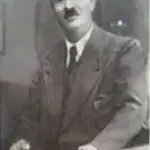 Riza Kishta, MP of Elbasan in the Zog Monarchy, during the occupation of Albania and in the communist regime, (unique case MP in three regimes). An officer of the National Army during the occupation period, engaged unreservedly with the Anti-fascist Movement and served partisan gangs in Skrapar, Gramsh, and Elbasan. He was arrested in 1946 on charges of participating in the Parliamentary Group and dying during torture in the cells of the Elbasan Interior Branch in 1947.
Riza Kishta, MP of Elbasan in the Zog Monarchy, during the occupation of Albania and in the communist regime, (unique case MP in three regimes). An officer of the National Army during the occupation period, engaged unreservedly with the Anti-fascist Movement and served partisan gangs in Skrapar, Gramsh, and Elbasan. He was arrested in 1946 on charges of participating in the Parliamentary Group and dying during torture in the cells of the Elbasan Interior Branch in 1947.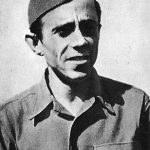 Nako Spiru, Corfu Economics student, Communist of the Hours, and Principal Leader of the CPA for Central Albania, member of the General Staff of the National Liberation Army. A member of the People’s Assembly in 1945, for the cause of war is decorated the “People’s Hero”, the first secretary of the Communist Youth, and the Chairman of the State Planning Commission, who was de facto prime minister of Albania. Enver Hoxha viewed him as a rival as he denounced Enver to the Yugoslavs as “mediocre and inept”. In 1947, after being accused by Enver Hoxha of being a pro-Yugoslav, he died at the Tirana Military Hospital after having a bullet wound to the body taken to his office in the prime minister. The official version of suicide after the 1990s, his close associates, have publicly proven otherwise.
Nako Spiru, Corfu Economics student, Communist of the Hours, and Principal Leader of the CPA for Central Albania, member of the General Staff of the National Liberation Army. A member of the People’s Assembly in 1945, for the cause of war is decorated the “People’s Hero”, the first secretary of the Communist Youth, and the Chairman of the State Planning Commission, who was de facto prime minister of Albania. Enver Hoxha viewed him as a rival as he denounced Enver to the Yugoslavs as “mediocre and inept”. In 1947, after being accused by Enver Hoxha of being a pro-Yugoslav, he died at the Tirana Military Hospital after having a bullet wound to the body taken to his office in the prime minister. The official version of suicide after the 1990s, his close associates, have publicly proven otherwise.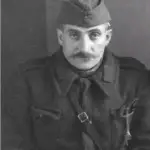 Mestan Ujaniku, an anti-Zogist in the Monarchy, commander of the first Anti-Fascist gang in Albania, that of Skrapar, where he had his three partisan sons. Berat district commander with the rank of lieutenant colonel, deputy in the People’s Assembly in the 1945 election, was arrested in 1947 along with his three partisan sons in the Second Group of Deputies. After being sentenced to imprisonment, he dies in torture cells in Tirana prison in early 1948.
Mestan Ujaniku, an anti-Zogist in the Monarchy, commander of the first Anti-Fascist gang in Albania, that of Skrapar, where he had his three partisan sons. Berat district commander with the rank of lieutenant colonel, deputy in the People’s Assembly in the 1945 election, was arrested in 1947 along with his three partisan sons in the Second Group of Deputies. After being sentenced to imprisonment, he dies in torture cells in Tirana prison in early 1948.
-
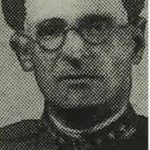 Islam Radovicka, Commander of the 1st Vlora-Gjirokastra Operational Area with the rank of Lieutenant Colonel. After November 1944 until February 17, 1945, he was assigned command of the First Division and then from February 1945 until September 15, 1946, assigned to the post of Chief Operating Officer at the General Command in Tirana. On November 28 of this year he was promoted to colonel and from September 15, 1946 to the end of March, 1947, he was made available to the National Army. In December 1945, Colonel Islam Radovicka ran for parliament in the First Legislature of the People’s Assembly in the Permet area. His career in the Military Branch of Tirana was further closed, and in May 1947, together with Lieutenant Colonel Mestan Ujaniku etc., he was arrested and tried with the so-called “Group of Deputies”. On February 7, 1948, at the age of 50, Colonel Islam Radovicka was shot
Islam Radovicka, Commander of the 1st Vlora-Gjirokastra Operational Area with the rank of Lieutenant Colonel. After November 1944 until February 17, 1945, he was assigned command of the First Division and then from February 1945 until September 15, 1946, assigned to the post of Chief Operating Officer at the General Command in Tirana. On November 28 of this year he was promoted to colonel and from September 15, 1946 to the end of March, 1947, he was made available to the National Army. In December 1945, Colonel Islam Radovicka ran for parliament in the First Legislature of the People’s Assembly in the Permet area. His career in the Military Branch of Tirana was further closed, and in May 1947, together with Lieutenant Colonel Mestan Ujaniku etc., he was arrested and tried with the so-called “Group of Deputies”. On February 7, 1948, at the age of 50, Colonel Islam Radovicka was shot
-
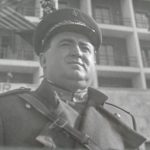 Koçi Xoxe, member of the Korça Communist group, founder of the SNP, member of the Political Bureau and the General Staff, vice president of the Democratic Front, organizational secretary of the SNP, MP of the People’s Assembly, “Hero of The People ”and“ Hero of the Peoples of Yugoslavia ”, Lieutenant General, Minister of the Interior and Deputy Prime Minister. He is accused by Enver Hoxha of directing Stalin as a Belgrade agent and after being barbarically tortured by the investigator, sentenced to death and executed in 1949, accused of all crimes committed up to that year by the communist regime of Tirana.
Koçi Xoxe, member of the Korça Communist group, founder of the SNP, member of the Political Bureau and the General Staff, vice president of the Democratic Front, organizational secretary of the SNP, MP of the People’s Assembly, “Hero of The People ”and“ Hero of the Peoples of Yugoslavia ”, Lieutenant General, Minister of the Interior and Deputy Prime Minister. He is accused by Enver Hoxha of directing Stalin as a Belgrade agent and after being barbarically tortured by the investigator, sentenced to death and executed in 1949, accused of all crimes committed up to that year by the communist regime of Tirana.
-
 Pandi Kristo, antisogist and member of the Communist Party of Korça, member of the Political Bureau, Political Secretary of the District of Tirana, Secretary of the Central Committee of the Albanian Communist Party, where she covered the Ministry of the Interior. Sentenced to 25 years in prison, and after serving his sentence in the Burrel prison, he is deported to Myzeqeesa villages with his family where he is released after 1990.
Pandi Kristo, antisogist and member of the Communist Party of Korça, member of the Political Bureau, Political Secretary of the District of Tirana, Secretary of the Central Committee of the Albanian Communist Party, where she covered the Ministry of the Interior. Sentenced to 25 years in prison, and after serving his sentence in the Burrel prison, he is deported to Myzeqeesa villages with his family where he is released after 1990.
-
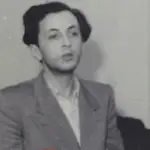 Vaske Koleci, antisogist, participant in the Colonial Anti-Fascist War, Deputy Minister of the Interior, and subsequently Director of several different branches of State Security. In 1948 he was arrested and convicted by the Koçi Xoxes group as no. 2 of Security, with 15 years in prison. He was charged with all violence and torture committed up to that time in investigative and firing cells with and without trial. He is later released and interned in the villages of Elbasan where he works as a tailor.
Vaske Koleci, antisogist, participant in the Colonial Anti-Fascist War, Deputy Minister of the Interior, and subsequently Director of several different branches of State Security. In 1948 he was arrested and convicted by the Koçi Xoxes group as no. 2 of Security, with 15 years in prison. He was charged with all violence and torture committed up to that time in investigative and firing cells with and without trial. He is later released and interned in the villages of Elbasan where he works as a tailor.
-
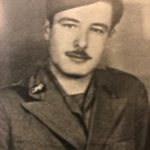 Vangjo Mitrojorgji, Head of the Directorate of Internal Affairs of Tirana, and at the same time Director of several branches of State Security in 1945-1948. One of Koçi Xoxes’s closest associates. He was arrested and sentenced to 10 years in prison in the trial of this group. After being released, he was interned for a short time, and then returned to Tirana where he was left to work.
Vangjo Mitrojorgji, Head of the Directorate of Internal Affairs of Tirana, and at the same time Director of several branches of State Security in 1945-1948. One of Koçi Xoxes’s closest associates. He was arrested and sentenced to 10 years in prison in the trial of this group. After being released, he was interned for a short time, and then returned to Tirana where he was left to work.
 Nuri Huta, journalist and diplomat. Attached as a representative of the People’s Republic of Albania in the UNSCOB Organization for the Balkans. Then in 1947-1948 he was a military and cultural attaché at the Albanian Embassy in Belgrade, Yugoslavia. He also for a short time served in senior posts at the Ministry of Education. Arrested with Kochi Xoxes’ group and sentenced to five years in prison after being accused of being one of the founders of Albania’s union with Yugoslavia.
Nuri Huta, journalist and diplomat. Attached as a representative of the People’s Republic of Albania in the UNSCOB Organization for the Balkans. Then in 1947-1948 he was a military and cultural attaché at the Albanian Embassy in Belgrade, Yugoslavia. He also for a short time served in senior posts at the Ministry of Education. Arrested with Kochi Xoxes’ group and sentenced to five years in prison after being accused of being one of the founders of Albania’s union with Yugoslavia.
-
 Myftar Tare, antisogist and communist of the early hours in Elbasan Normal, Deputy Commissar of the Gjirokastra Corps, Colonel, First Director of Political Intelligence, and companion of Enver Hoxha at the meeting with Tito at Brioni Island and Peace in Paris. Arrested with Koci Xoxes’ group as his close associate and after his release in 1949, he works at the Collection Company. Until his retirement in 1975 he was overseen by State Security.
Myftar Tare, antisogist and communist of the early hours in Elbasan Normal, Deputy Commissar of the Gjirokastra Corps, Colonel, First Director of Political Intelligence, and companion of Enver Hoxha at the meeting with Tito at Brioni Island and Peace in Paris. Arrested with Koci Xoxes’ group as his close associate and after his release in 1949, he works at the Collection Company. Until his retirement in 1975 he was overseen by State Security.
-
 Kadri Hoxha, antizogist, communist of the hour, political secretary of the Elbasan district, hosts Enver Hoxha in Winter Operation, representative of the General Staff of the National Liberation Army near Anglo-American missions in Bari, Italy. In 1949 he is accused of being an agent of British missions and imprisoned and interned along with his wife, the Officer, serving a sentence in the Myzeqe area until 1991.
Kadri Hoxha, antizogist, communist of the hour, political secretary of the Elbasan district, hosts Enver Hoxha in Winter Operation, representative of the General Staff of the National Liberation Army near Anglo-American missions in Bari, Italy. In 1949 he is accused of being an agent of British missions and imprisoned and interned along with his wife, the Officer, serving a sentence in the Myzeqe area until 1991.
Coming tomorrow





